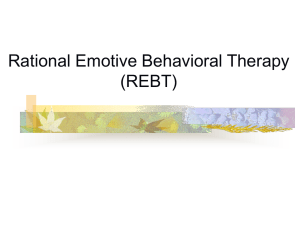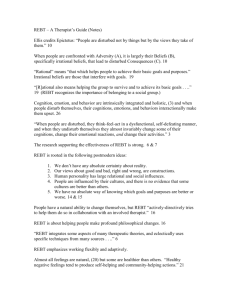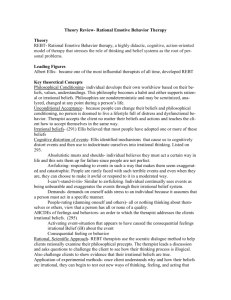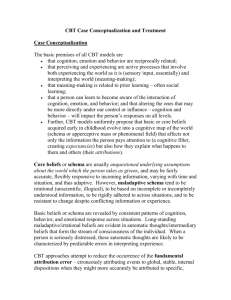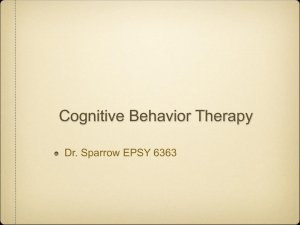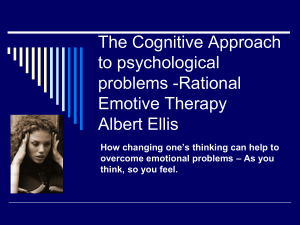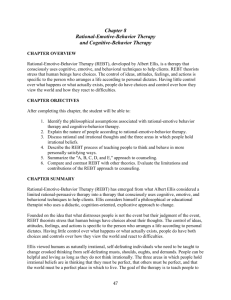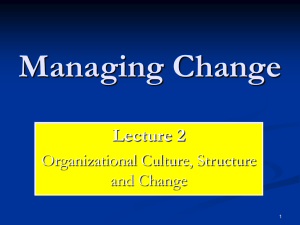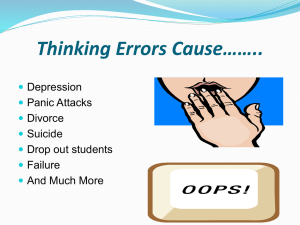REBT for Groups
advertisement
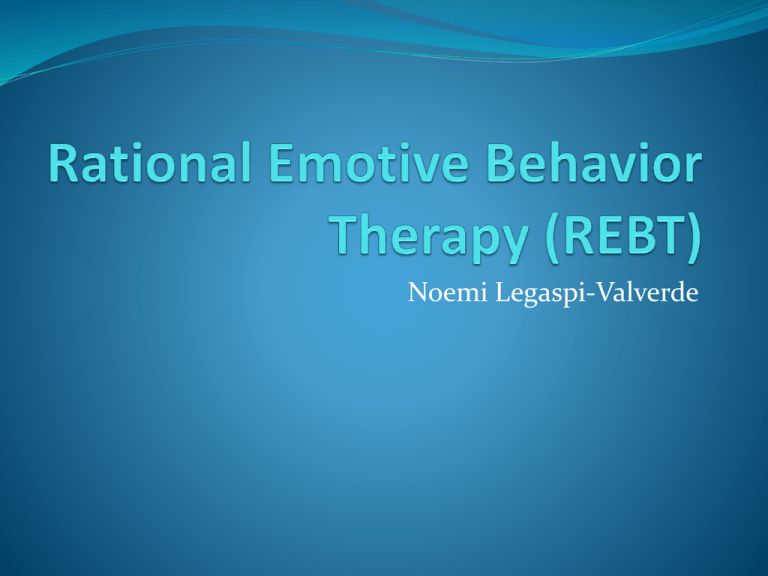
Noemi Legaspi-Valverde Albert Ellis Born September 27, 1913 REBT was founded in the 1950’s Believed the role of the therapist was to help clients understand that one’s personal philosophy contains beliefs that lead to emotional pain. Stressed changing self defeating beliefs by demonstrating their irrationality. Today, REBT is a major cognitive behavioral approach. Key Concepts-Assumptions of REBT Thinking, feeling, and behaving continually interact with and influence one an another (Corey, p377). Emotional disturbances are caused by biological and environmental factors. We are influenced by people and the things around us. And we also affect those around us. Create irrational beliefs about events. Emotional distress arises from our irrational beliefs from childhood. Irrational beliefs can be modified by using cognitive, emotive, and behavioral methods. In order for change to occur, we need to: Take responsibility for our irrational thoughts. Look at how we feel, think, and behave. Do the hard work to change Key Concept-Emotional Disturbance The “shoulds”, “oughts”, and “musts” play a role in dysfunctional beliefs. Three forms of “musturbation” “I absolutely must do well and be approved of by significant others. I must win their approval or else I am inadequate, worthless person.” “You must under all conditions and at all times treat me considerately, kindly, lovingly, and fairly. If you don’t, you are no damned good and are a rotten person.” “Conditions under which I live absolutely must be comfortable so that I can get what I want without too much effort. If not, it is awful; I can’t stand it and can’t have any real happiness at all!” Key Concepts-The ABC Theory A=activating event (what happened; can be an event or image) B= belief(s) about the event C= consequence (emotional response) Example: You find out you didn’t get a promotion at work. A=not getting the promotion B=you are a failure C=feel rejected and hurt Key Concepts-Confronting Irrational Beliefs Teaching member’s the ABC theory. When members can see how their irrational beliefs are linked to their emotional disturbance, they can dispute (D) their beliefs. Process of Disputation of irrational beliefs Detecting Debating Discriminating Ultimate result is to reduce feelings of depression and rejection. Effect of Disputing (E) Key Concepts-Self Rating and Learning Self-Acceptance Rating our acts and behaviors vs. rating ourselves as a person. Example: “If I fail at something, I’m a failure in life” The opposite of self rating is self-acceptance. Goals of REBT Group Help participants’ through process of achieving unconditional self-acceptance (USA) and unconditional other acceptance (UOA). Help participants’ differentiate between realistic and unrealistic and self-defeating and self-enhancing goals (Corey, 2008). Change dysfunctional emotions into healthy ones. Role of the Group Leader Serve as teachers and mentors Demonstrate respect Encourage and support Self-disclose when beneficial for participants. Develop trust Use cognitive and emotive techniques. encourage participants to discover irrational beliefs Make connection of how the irrational beliefs lead to emotional distress Challenge clients to modify their irrational beliefs Dispute irrational beliefs and replace with rational beliefs Therapeutic Techniques and Procedures Purpose is to change clients’ way of thinking, feeling, and acting. Doesn’t look into individual’s early history. There is a focus on the here and now. “Focus on specific techniques for changing a client’s self-defeating thoughts in concrete situations. In addition to modifying beliefs, this approach helps group members see how their beliefs influence what they feel and what they do; thus there is also a concern for changing feelings and behaviors that flow from dysfunctional thinking pattern” (Corey, 2008, p 382). Cognitive Methods Teaching the A-B-C’s Active Disputation of Faulty Beliefs Teaching Coping SelfStatements Psychoeducational Methods Cognitive Homework Applying the ABC’s in every day life. Emotive Methods Unconditional acceptance Rational emotive imagery Imagine the worst thing that can happen. Use of humor Shame-attacking exercises Take the risk to do something they are afraid to do because of what others might think. Then they realize their shame is created by them. Role playing Behavioral Methods Homework assignments Reinforcement and penalties Skills training Advantages of REBT Applied to Group Work Homework assignments in a group context vs. one-to-one therapy. Offers several procedures Homework report forms Sharing personal problems Listening to other’s problems REBT to Group Work in Schools Applied to students, K-12. The goal is to prevent emotional and behavioral problems. Prevent intervention for those who exaggerate negative events. The purpose is to help in dealing with students’ interpersonal relationships and home environment. Applying REBT with Multicultural Populations “When members are not challenged too quickly, they can be invited to examine the premises on which they behave” (Corey, 2008,p 391). The focuses on the problems of living. A group must be careful when challenging clients about their beliefs and behaviors. Evaluation of REBT in Groups Strengths Many disorders can be addressed Explore self-defeating beliefs and replacing with more rational ones. Group leaders can learn to identify their internal dialogue. Help members deal with everyday living. Limitations of REBT in Groups Group leader imposing his/her values on members. Members may feel pressured to accept goals and values of the group leader. Members may depend on group leader about what constitutes reality. References Corey, G. (2008). Theory and Practice of Group Counseling. Belmont, California: Brooke/Cole.

